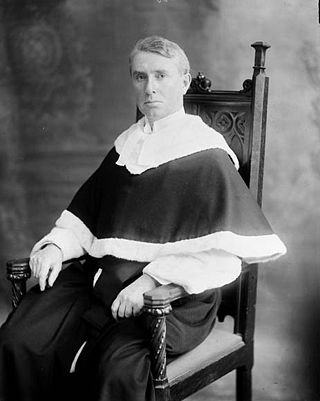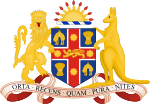
A justice of the peace (JP) is a judicial officer of a lower or puisne court, elected or appointed by means of a commission to keep the peace. In past centuries the term commissioner of the peace was often used with the same meaning. Depending on the jurisdiction, such justices dispense summary justice or merely deal with local administrative applications in common law jurisdictions. Justices of the peace are appointed or elected from the citizens of the jurisdiction in which they serve, and are usually not required to have any formal legal education in order to qualify for the office. Some jurisdictions have varying forms of training for JPs.

The term magistrate is used in a variety of systems of governments and laws to refer to a civilian officer who administers the law. In ancient Rome, a magistratus was one of the highest ranking government officers, and possessed both judicial and executive powers. In other parts of the world, such as China, magistrate is a word applied to a person responsible for administration over a particular geographic area. Today, in some jurisdictions, a magistrate is a judicial officer who hears cases in a lower court, and typically deals with more minor or preliminary matters. In other jurisdictions, magistrates are typically trained volunteers appointed to deal with criminal and civil matters in their local areas.

The Judiciary of the Hong Kong Special Administrative Region is the judicial branch of the Hong Kong Special Administrative Region. Under the Basic Law of Hong Kong, it exercises the judicial power of the Region and is independent of the executive and legislative branches of the Government. The courts in Hong Kong hear and adjudicate all prosecutions and civil disputes, including all public and private law matters.

The Supreme Court of New South Wales is the highest state court of the Australian State of New South Wales. It has unlimited jurisdiction within the state in civil matters, and hears the most serious criminal matters. Whilst the Supreme Court is the highest New South Wales court in the Australian court hierarchy, an appeal by special leave can be made to the High Court of Australia.

The District Court of New South Wales is the intermediate court in the judicial hierarchy of the Australian state of New South Wales. It is a trial court and has an appellate jurisdiction. In addition, the Judges of the Court preside over a range of tribunals. In its criminal jurisdiction, the Court may deal with all serious criminal offences except murder, treason and piracy. The Court's civil jurisdiction is generally limited to claims less than A$1,250,000.

The Local Court of New South Wales is the lowest court in the judicial hierarchy of the Australian state of New South Wales. Formerly known as the Court of Petty Sessions and the Magistrates Court, there are more than 160 branches across New South Wales where the Local Court has jurisdiction to deal with the majority of minor civil and criminal matters.
Preventive detention is an imprisonment that is putatively justified for non-punitive purposes, most often to prevent further criminal acts.

The High Court of Singapore is the lower division of the Supreme Court of Singapore, the upper division being the Court of Appeal. The High Court consists of the chief justice and the judges of the High Court. Judicial Commissioners are often appointed to assist with the Court's caseload. There are two specialist commercial courts, the Admiralty Court and the Intellectual Property Court, and a number of judges are designated to hear arbitration-related matters. In 2015, the Singapore International Commercial Court was established as part of the Supreme Court of Singapore, and is a division of the High Court. The other divisions of the high court are the General Division, the Appellate Division, and the Family Division. The seat of the High Court is the Supreme Court Building.

The Drug Court of New South Wales is an inferior court constituted as a court of record within the Australian court hierarchy with its jurisdiction limited to New South Wales, Australia. It is a specialist court that deals with criminal offences in which the defendant has an addiction to illicit drugs. The Court exercises both local and district court jurisdiction and has a similar status to the District Court of New South Wales.
The Victims Compensation Tribunal of New South Wales is a former tribunal of the Government of New South Wales that was established to determine the amounts that may be awarded to victims of crime for personal injury in New South Wales, a state of Australia. The tribunal had exclusive jurisdiction to determine the amount which the Victims Compensation Fund of New South Wales would pay to a victim of crime. This tribunal was unique in Australia in that it did not notify nominated defendants of tribunal hearings and therefore did not hear evidence that may exist from such persons.

The Children's Court Clinic in New South Wales, part of the Sydney Children's Hospitals Network, is a medico-legal clinic established pursuant to Section 15B of the Children’s Court Act 1987 (NSW) and the Children and Young Persons Act 1998 (NSW) which prepares independent reports on children for legal proceedings before the Children's Court of New South Wales.
The Youth Drug and Alcohol Court of New South Wales was the generic name given to a harm minimization program administered through the Children's Court of New South Wales that operated between 2000 and 2012. The Court was a children's court that specialised in criminal offences in which a child over 14 but under 18 years of age has an addiction to illicit drugs or alcohol.
The Youth Justice Court of the Northern Territory is an Australian court which hears and determines cases concerning crimes committed by children under the age of 18 years in the Northern Territory.

The Local Court of the Northern Territory is one of two levels of court in the Northern Territory of Australia. It has jurisdiction in civil disputes up to A$250,000, and in criminal cases in the trial of summary offences, and also deals with preliminary matters for indictable offences which are then heard by the Supreme Court of the Northern Territory. There are local courts held in Darwin, Alice Springs, Katherine, Tennant Creek, and some "bush courts" in remote locations.

The Magistrates Court of the Australian Capital Territory is a court of summary jurisdiction that deals with the majority of criminal law matters and the majority of small civil law matters in the Australian Capital Territory, the Jervis Bay Territory and the Australian Antarctic Territory.
Rodney ("Rod") David Blackmore OAM, is a former senior magistrate in the Australian state of New South Wales. He is perhaps best known for his work with children and adolescents. Blackmore's last judicial posting was as the Senior Magistrate at the Children's Court of New South Wales, serving from 1978 to 1995.
The Children's Court of Victoria is a statutory court created in Victoria, Australia. The court deals with criminal offences alleged to be committed by children aged between 10 and 17 and with proceedings concerning children under the age of 17 relating to the care and protection of children.
The Judicial Commission of New South Wales is an independent statutory corporation of the New South Wales Government that provides sentencing information and continuing education to and examines complaints made against judicial officers in New South Wales, Australia.
The Judiciary of Sri Lanka are the civil and criminal courts responsible for the administration of justice in Sri Lanka. The Constitution of Sri Lanka defines courts as independent institutions within the traditional framework of checks and balances. They apply Sri Lankan Law which is an amalgam of English common law, Roman-Dutch civil law and Customary Law; and are established under the Judicature Act No 02 of 1978 of the Parliament of Sri Lanka.
The New South Wales Department of Communities and Justice, a department of the Government of New South Wales, is responsible for the delivery of services to some of the most disadvantaged individuals, families and communities; and the administration and development of a just and equitable legal system of courts, tribunals, laws and other mechanisms that further the principles of justice in the state of New South Wales, Australia. It also provides services to children and young people, families, people who are homeless, people with a disability, their families and carers, women, and older people. The department is the lead agency of the Stronger Communities cluster of the New South Wales government.








